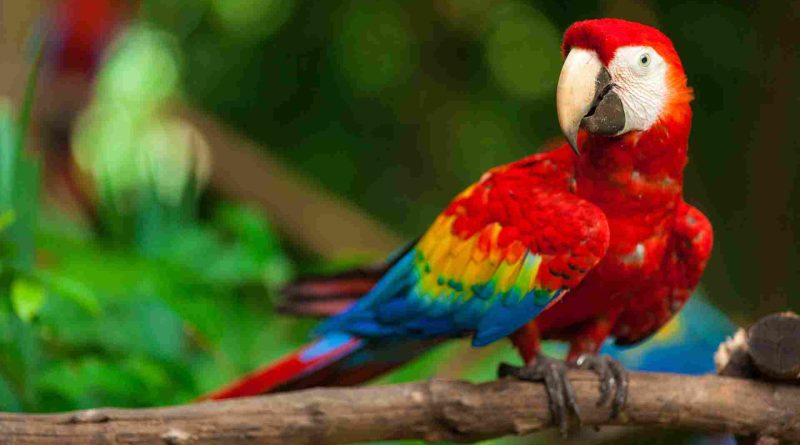Unlocking the mystery of saving the world’s fastest parrot
Imagine if the key to preserving a critically endangered avian species lay within safeguarding just 7% of Tasmania’s native forests from logging.
Now, picture this: proponents of forest conservation and even some sectors of the logging industry advocating for a similar reduction in logging activities.
This is precisely the argument put forth in a groundbreaking proposal championed by ecologists and conservationists, who assert that urgent action is imperative to prevent the swift parrot, a migratory marvel, from vanishing within a decade.
Tracking the globe-trotting swift parrot presents a formidable challenge. Its annual journey spans from the winter havens of Victoria and New South Wales to various nesting sites across Tasmania, following the bloom of its primary sustenance, the blue gum.
Yet, amidst this ecological ballet, one fact remains stark: swift parrot populations are plummeting. According to a recent bird census published by CSIRO, their numbers have dwindled to around 750 individuals, down from approximately 2,000 a mere decade ago.
A damning report jointly released by BirdLife Australia, the Wilderness Society, and Tasmanian conservation group, the Tree Projects, attributes this decline primarily to the loss of large, hollow-bearing trees crucial for breeding.
Pointing to a peer-reviewed study, the report highlights that nearly a quarter of Tasmania’s southern old-growth forests have succumbed to logging between 1997 and 2016. This, it argues, underscores a systemic failure by the state government to heed repeated scientific warnings regarding the paramount importance of preserving parrot habitats.
Dr. Jennifer Sanger, a forest ecologist at Tree Projects, asserts that while the swift parrot faces multifaceted threats, habitat loss due to logging reigns as the foremost concern.
Regrettably, governmental responses have fallen short. The Tasmanian Liberal government, in a bid to appease conservationists, unveiled a policy in late 2020 promising to set aside 9,300 hectares of southern forests from logging.
However, critics contend that this move is more illusion than substance. According to the report titled “On the Edge of Extinction,” a mere fraction of this area, 2,900 hectares, would be spared from logging, while the rest, with vital mature trees, remains open to exploitation by the forestry industry.
The report advocates for a paradigm shift. It suggests that safeguarding the swift parrot’s habitat would necessitate allocating a mere 7% of state land available for logging, protecting not only 40,000 hectares of mature forest but also 20,000 hectares of regenerating habitat.
Interestingly, this proposal finds support even within the forestry sector itself. The board of Sustainable Timber Tasmania, the state-owned forestry enterprise, proposed a 30% reduction in timber supply back in 2016, emphasizing the importance of conservation.
Yet, political inertia persists. State resources minister Guy Barnett rejected this plea, prioritizing economic interests over ecological imperatives.
However, there’s a glimmer of hope. With strategic planning and a willingness to prioritize conservation, stakeholders can alleviate the pressure on this endangered species.
As Dr. Eric Woehler, the convenor of BirdLife Tasmania, aptly summarizes, “It’s not rocket science.” The real obstacle, he laments, lies in the realm of politics—a realm where the fate of species hangs in the balance, teetering precariously on the edge of extinction.

